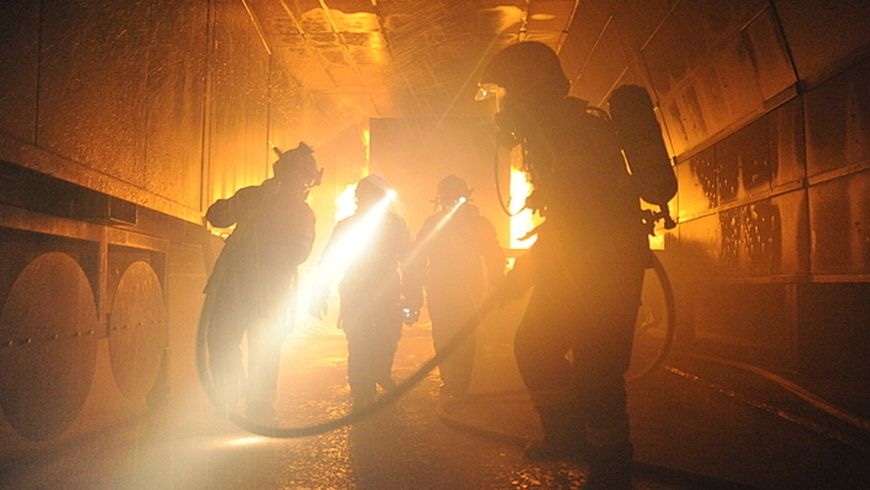May 3 2019
Gotthard, Montblanc, St. Bernardino – tunnel fires recurrently cause the ceilings of the apparently stable tubes to collapse. Infernal temperatures of up to 1000 °C push concrete to its boundaries – and based on the type of material in question, it can burst. However, the process has still not been completely understood. It is evident that the water contained in high-performance concrete begins to move and evaporates – but cannot escape. The huge vapor pressure in the minute pores of the concrete and the thermal stress on the material can result in parts being blown off. Whether such explosions really take place and how critical the consequences are, rely on many factors and can only just be predicted.
 In tunnel fires, concrete can be a major hazard, not at least for rescue groups. (Image: www.ifa-swiss.ch)
In tunnel fires, concrete can be a major hazard, not at least for rescue groups. (Image: www.ifa-swiss.ch)
So as to gain a better understanding of the physics of exploding concrete, Empa scientists and a team from the University of Grenoble and the Laue-Langevin Institute, also in Grenoble, have for the first time used neutron tomography to create three-dimensional (3D) images of the inner side of heated concrete in real time. Thanks to the powerful neutron source at the Laue-Langevin Institute, it was possible to carry out the investigations. The researchers captured nearly 500 pictures per minute and constructed an exclusive 3D model of the spalling concrete.
Thus far, specialists have only been able to establish that water in concrete travels away from a heat source and accumulates. The moisture would, therefore, serve as a barrier and would stop water vapor from escaping. Thus, the vapor pressure would rise to the extent that the material would have no choice but to burst. Using the new experimental arrangement, the Empa scientists and their colleagues could now essentially see this moisture barrier.
Under pressure
Concrete is made up of a blend of cement, sand, and water. A chemical reaction takes place between cement and water, which physically and chemically binds the water and toughens the mixture. If the temperature in a fire surpasses 200 °C, the cement in the concrete dehydrates and the bound water changes into vapor. High-performance concrete mostly has very fine pores and very low porosity. These properties are of significant advantage as they offer high strength and outstanding durability, making the concrete almost resistant to external contaminants. However, the high-performance concrete’s low permeability is actually a drawback in the case of a fire with extremely high temperatures as water vapor cannot escape and very high vapor pressures can accumulate.
High-performance concrete can explode at high temperatures. One of the reasons for spalling is the water that is inside the concrete. Empa scientists have already created and patented new additives that thwart the spalling of concrete. The new results should, at present, lead to the next step towards the progress of safe building materials with more resistance even at the highest temperatures, such as a tunnel fire.
Big Bang - Explosion of heated Concrete
Credit: EMPA